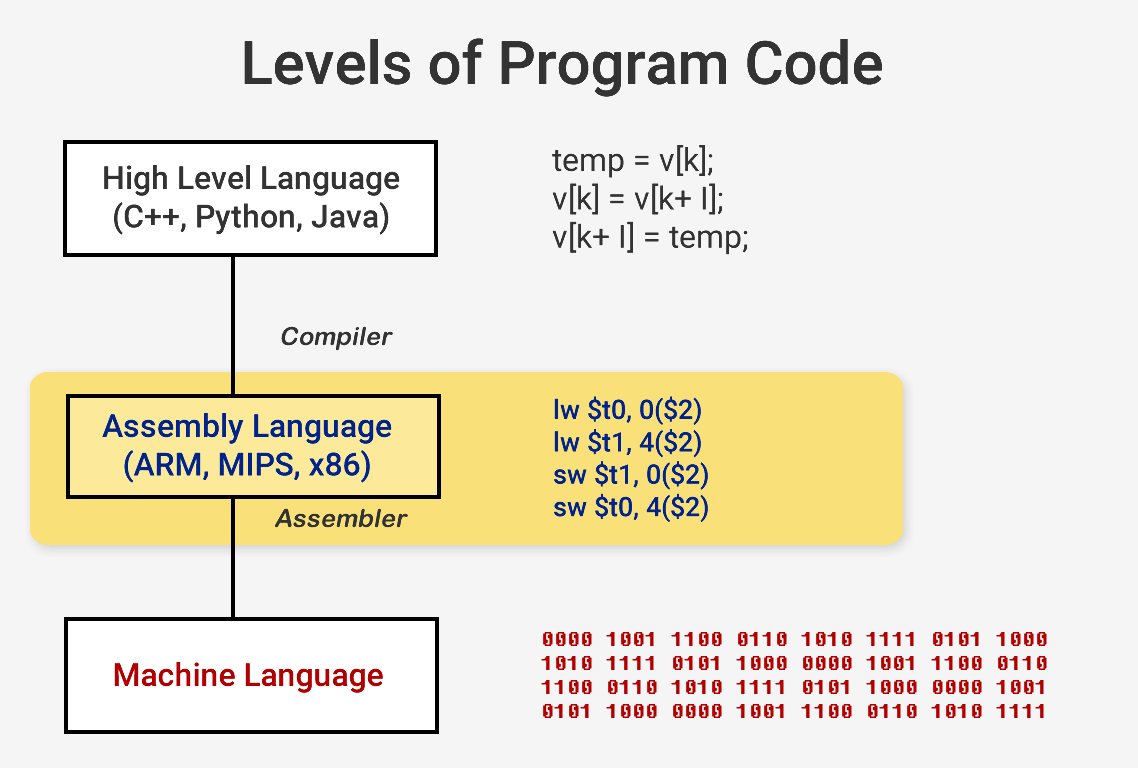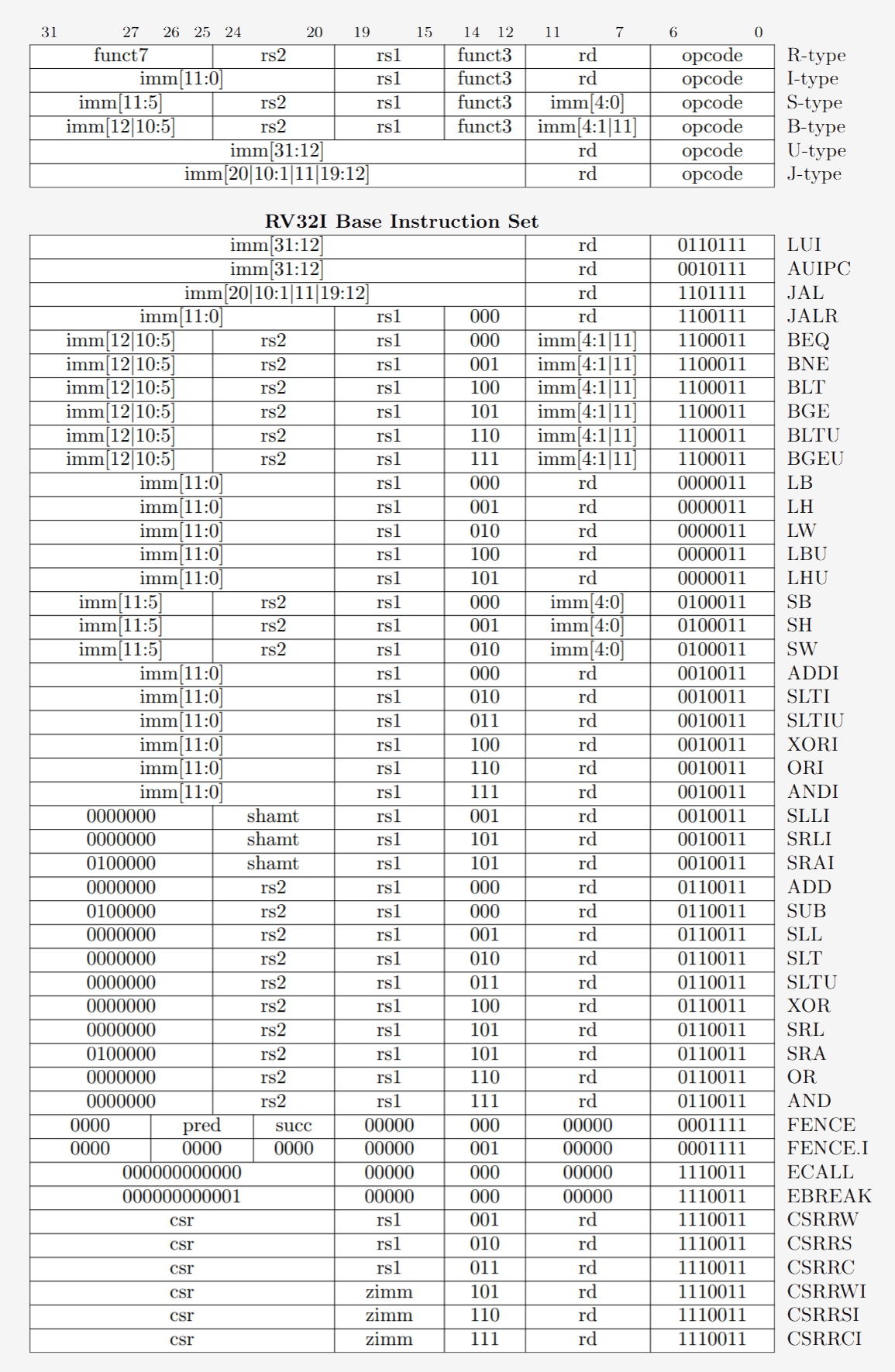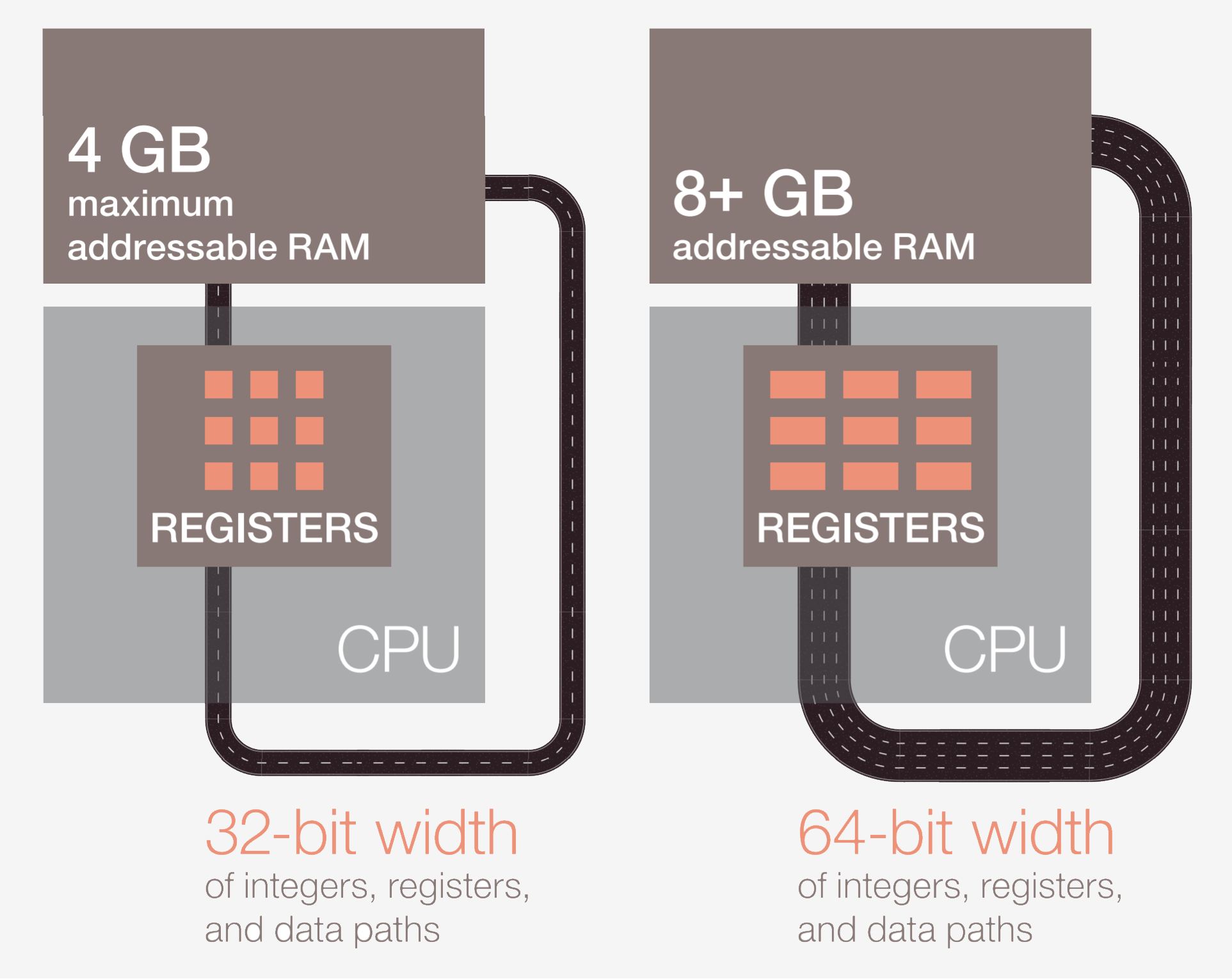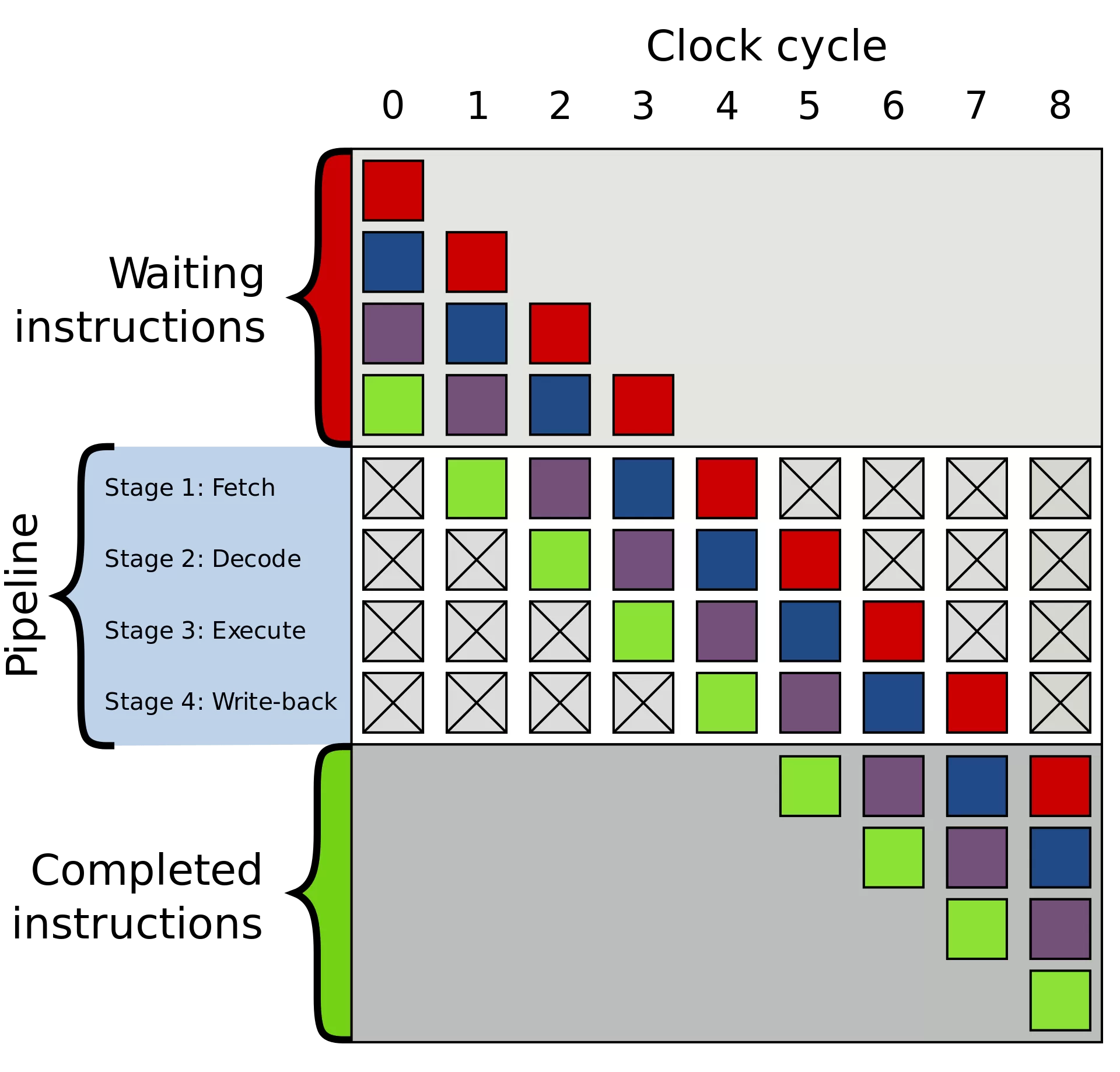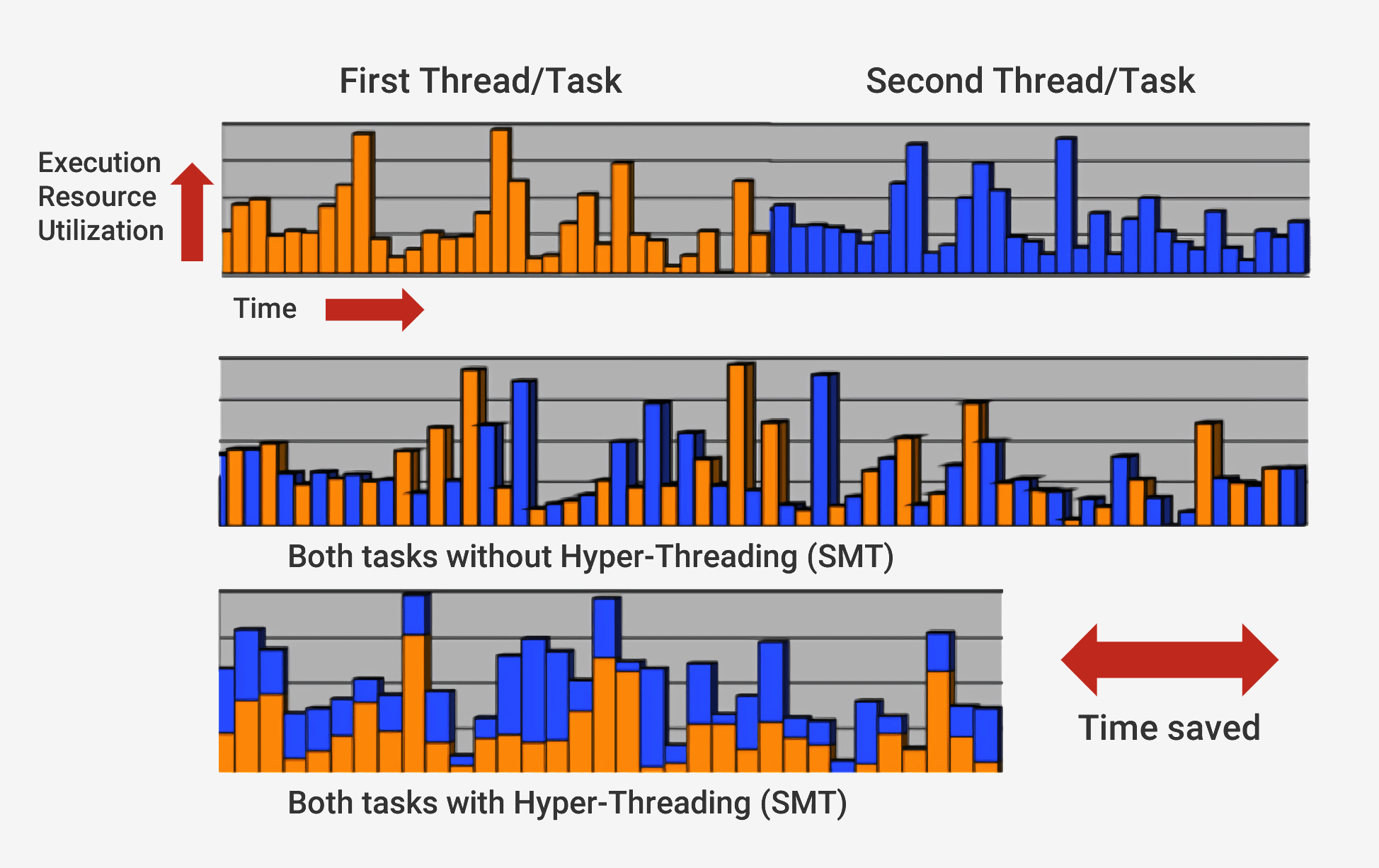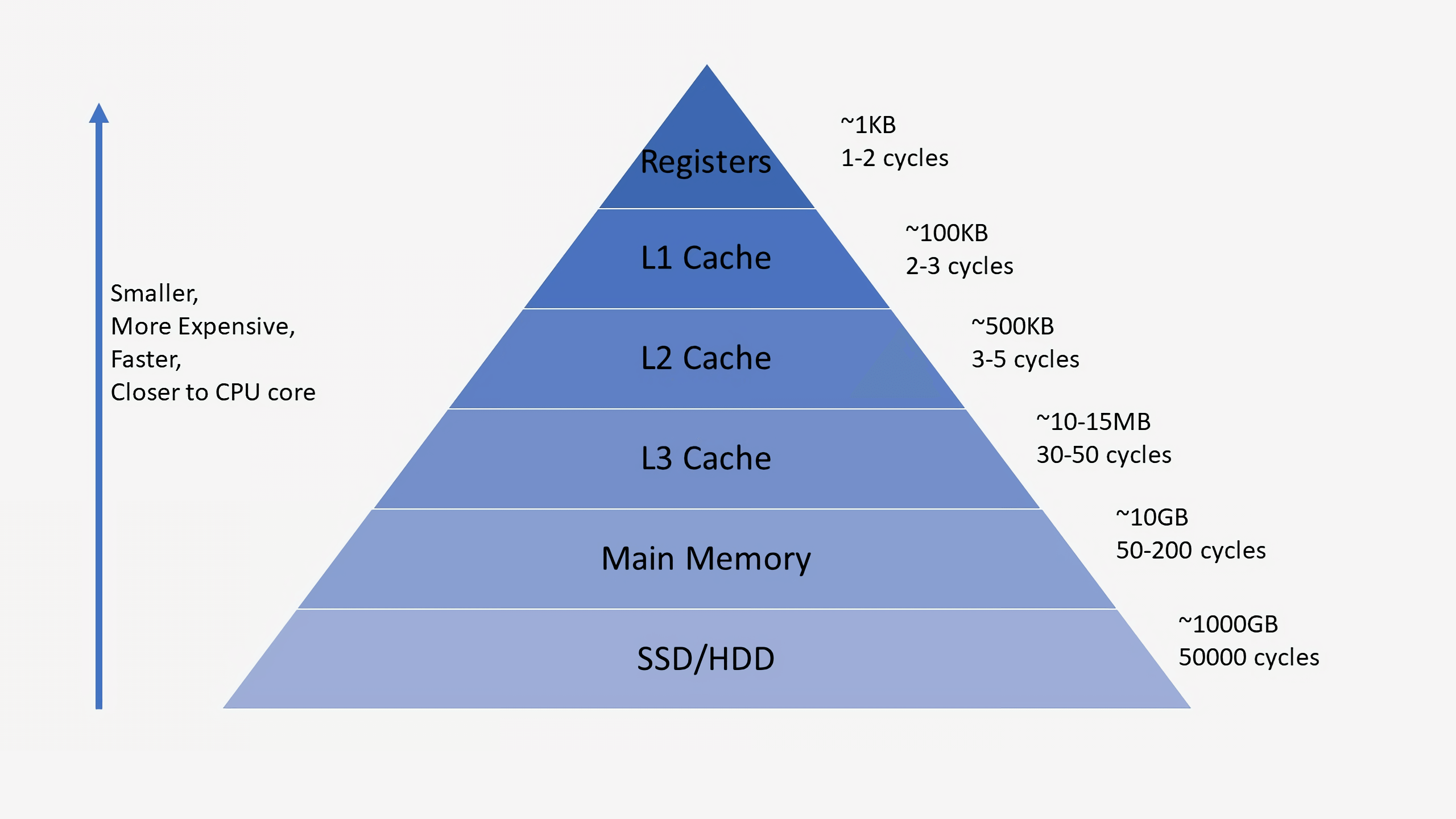How CPUs are Designed and Built: Fundamentals of Computer Architecture

We all think of the CPU as the “brains” of a computer, but what does that actually mean? What is going on inside with the billions of transistors that make your computer work? In this four-part series, we’ll be focusing on computer hardware design, covering the ins and outs of what makes a computer function.
The series will cover computer architecture, processor circuit design, VLSI (very-large-scale integration), chip fabrication, and future trends in computing. If you’ve always been interested in the details of how processors work on the inside, stick around – this is what you need to know to get started.

What Does a CPU Actually Do?
Let’s start at a very high level with what a processor does and how the building blocks come together in a functioning design. This includes processor cores, the memory hierarchy, branch prediction, and more. First, we need a basic definition of what a CPU does.
The simplest explanation is that a CPU follows a set of instructions to perform some operation on a set of inputs. For example, this could be reading a value from memory, adding it to another value, and finally storing the result back in memory at a different location. It could also be something more complex, like dividing two numbers if the result of the previous calculation was greater than zero.
When you want to run a program like an operating system or a game, the program itself is a series of instructions for the CPU to execute. These instructions are loaded from memory, and on a simple processor, they are executed one by one until the program is finished. While software developers write their programs in high-level languages like C++ or Python, for example, the processor can’t understand that. It only understands 1s and 0s, so we need a way to represent code in this format.
The Basics of CPU Instructions
Programs are compiled into a set of low-level instructions called assembly language as part of an Instruction Set Architecture (ISA). This is the set of instructions that the CPU is built to understand and execute. Some of the most common ISAs are x86, MIPS, ARM, RISC-V, and PowerPC. Just like the syntax for writing a function in C++ is different from a function that does the same thing in Python, each ISA has its own syntax.
These ISAs can be broken up into two main categories: fixed-length and variable-length. The RISC-V ISA uses fixed-length instructions, which means a certain predefined number of bits in each instruction determines what type of instruction it is. This is different from x86, which uses variable-length instructions. In x86, instructions can be encoded in different ways and with different numbers of bits for different parts. Because of this complexity, the instruction decoder in x86 CPUs is typically the most complex part of the entire design.
Fixed-length instructions allow for easier decoding due to their regular structure but limit the total number of instructions an ISA can support. While the common versions of the RISC-V architecture have about 100 instructions and are open-source, x86 is proprietary, and nobody really knows how many instructions exist. People generally believe there are a few thousand x86 instructions, but the exact number isn’t public. Despite differences among the ISAs, they all carry essentially the same core functionality.
Example of some of the RISC-V instructions. The opcode on the right is 7-bits and determines the type of instruction. Each instruction also contains bits for which registers to use and which functions to perform. This is how assembly instructions are broken down into binary for a CPU to understand.
Now we are ready to turn our computer on and start running stuff. Execution of an instruction actually has several basic parts that are broken down through the many stages of a processor.
Fetch, Decode, Execute: The CPU Execution Cycle
The first step is to fetch the instruction from memory into the CPU to begin execution. In the second step, the instruction is decoded so the CPU can figure out what type of instruction it is. There are many types, including arithmetic instructions, branch instructions, and memory instructions. Once the CPU knows what type of instruction it is executing, the operands for the instruction are collected from memory or internal registers in the CPU. If you want to add number A to number B, you can’t do the addition until you actually know the values of A and B. Most modern processors are 64-bit, which means that the size of each data value is 64 bits.
64-bit refers to the width of a CPU register, data path, and/or memory address. For everyday users, that means how much information a computer can handle at a time, and it is best understood against its smaller architectural cousin, 32-bit. The 64-bit architecture can handle twice as much information at a time (64 bits versus 32).
After the CPU has the operands for the instruction, it moves to the execute stage, where the operation is done on the input. This could be adding the numbers, performing a logical manipulation on the numbers, or just passing the numbers through without modifying them. After the result is calculated, memory may need to be accessed to store the result, or the CPU could just keep the value in one of its internal registers. After the result is stored, the CPU will update the state of various elements and move on to the next instruction.
This description is, of course, a huge simplification, and most modern processors will break these few stages up into 20 or more smaller stages to improve efficiency. That means that although the processor will start and finish several instructions each cycle, it may take 20 or more cycles for any one instruction to complete from start to finish. This model is typically called a pipeline since it takes a while to fill the pipeline and for liquid to go fully through it, but once it’s full, you get a constant output.
Example of a 4-stage pipeline. The colored boxes represent instructions independent of each other.
Image credit: Wikipedia
Out-of-Order Execution and Superscalar Architecture
The whole cycle that an instruction goes through is a very tightly choreographed process, but not all instructions may finish at the same time. For example, addition is very fast, while division or loading from memory may take hundreds of cycles. Rather than stalling the entire processor while one slow instruction finishes, most modern processors execute out-of-order.
That means they will determine which instruction would be the most beneficial to execute at a given time and buffer other instructions that aren’t ready. If the current instruction isn’t ready yet, the processor may jump forward in the code to see if anything else is ready.
In addition to out-of-order execution, typical modern processors employ what is called a superscalar architecture. This means that at any one time, the processor is executing many instructions at once in each stage of the pipeline. It may also be waiting on hundreds more to begin their execution. In order to execute many instructions at once, processors will have several copies of each pipeline stage inside.
If a processor sees that two instructions are ready to be executed and there is no dependency between them, rather than wait for them to finish separately, it will execute them both at the same time. One common implementation of this is called Simultaneous Multithreading (SMT), also known as Hyper-Threading. Intel and AMD processors usually support two-way SMT, while IBM has developed chips that support up to eight-way SMT.
To accomplish this carefully choreographed execution, a processor has many extra elements in addition to the basic core. There are hundreds of individual modules in a processor that each serve a specific purpose, but we’ll just go over the basics. The two biggest and most beneficial are the caches and the branch predictor. Additional structures that we won’t cover include things like reorder buffers, register alias tables, and reservation stations.
Caches: Speeding Up Memory Access
The purpose of caches can often be confusing since they store data just like RAM or an SSD. What sets caches apart, though, is their access latency and speed. Even though RAM is extremely fast, it is orders of magnitude too slow for a CPU. It may take hundreds of cycles for RAM to respond with data, and the processor would be stuck with nothing to do. If the data isn’t in RAM, it can take tens of thousands of cycles for data on an SSD to be accessed. Without caches, our processors would grind to a halt.
Processors typically have three levels of cache that form what is known as a memory hierarchy. The L1 cache is the smallest and fastest, the L2 is in the middle, and L3 is the largest and slowest of the caches. Above the caches in the hierarchy are small registers that store a single data value during computation. These registers are the fastest storage devices in your system by orders of magnitude. When a compiler transforms a high-level program into assembly language, it determines the best way to utilize these registers.
When the CPU requests data from memory, it first checks to see if that data is already stored in the L1 cache. If it is, the data can be quickly accessed in just a few cycles. If it is not present, the CPU will check the L2 and subsequently search the L3 cache. The caches are implemented in a way that they are generally transparent to the core. The core will just ask for some data at a specified memory address, and whatever level in the hierarchy that has it will respond. As we move to subsequent stages in the memory hierarchy, the size and latency typically increase by orders of magnitude. At the end, if the CPU can’t find the data it is looking for in any of the caches, only then will it go to the main memory (RAM).
On a typical processor, each core will have two L1 caches: one for data and one for instructions. The L1 caches are typically around 100 kilobytes total, and size may vary depending on the chip and generation. There is also typically an L2 cache for each core, although it may be shared between two cores in some architectures. The L2 caches are usually a few hundred kilobytes. Finally, there is a single L3 cache that is shared between all the cores and is on the order of tens of megabytes.
When a processor is executing code, the instructions and data values that it uses most often will get cached. This significantly speeds up execution since the processor does not have to constantly go to main memory for the data it needs. We will talk more about how these memory systems are actually implemented in the second and third installments of this series.
Also of note, while the three-level cache hierarchy (L1, L2, L3) remains standard, modern CPUs (such as AMD’s Ryzen 3D V-Cache) have started incorporating additional stacked cache layers which tend to boost performance in certain scenarios.
Branch Prediction and Speculative Execution
Besides caches, one of the other key building blocks of a modern processor is an accurate branch predictor. Branch instructions are similar to “if” statements for a processor. One set of instructions will execute if the condition is true, and another will execute if the condition is false. For example, you may want to compare two numbers, and if they are equal, execute one function, and if they are different, execute another function. These branch instructions are extremely common and can make up roughly 20% of all instructions in a program.
On the surface, these branch instructions may not seem like an issue, but they can actually be very challenging for a processor to get right. Since at any one time, the CPU may be in the process of executing ten or twenty instructions at once, it is very important to know which instructions to execute. It may take 5 cycles to determine if the current instruction is a branch and another 10 cycles to determine if the condition is true. In that time, the processor may have started executing dozens of additional instructions without even knowing if those were the correct instructions to execute.
To address this issue, all modern high-performance processors employ a technique called speculation. This means the processor keeps track of branch instructions and predicts whether a branch will be taken or not. If the prediction is correct, the processor has already started executing subsequent instructions, resulting in a performance gain. If the prediction is incorrect, the processor halts execution, discards all incorrectly executed instructions, and restarts from the correct point.
These branch predictors are among the earliest forms of machine learning, as they adapt to branch behavior over time. If a predictor makes too many incorrect guesses, it adjusts to improve accuracy. Decades of research into branch prediction techniques have led to accuracies exceeding 90% in modern processors.
While speculation significantly improves performance by allowing the processor to execute ready instructions instead of waiting on stalled ones, it also introduces security vulnerabilities. The now-infamous Spectre attack exploits speculative execution bugs in branch prediction. Attackers can use specially crafted code to trick the processor into speculatively executing instructions that leak sensitive memory data. As a result, some aspects of speculation had to be redesigned to prevent data leaks, leading to a slight drop in performance.
The architecture of modern processors has advanced dramatically over the past few decades. Innovations and clever design have resulted in more performance and a better utilization of the underlying hardware. However, CPU manufacturers are highly secretive about the specific technologies inside their processors, so it’s impossible to know exactly what goes on inside. That being said, the fundamental principles of how processors work remain consistent across all designs. Intel may add their secret sauce to boost cache hit rates or AMD may add an advanced branch predictor, but they both accomplish the same task.
This overview and first part of the series covers most of the basics of how processors work. In the second part, we’ll discuss how the components that go into a CPU are designed, covering logic gates, clocking, power management, circuit schematics, and more.
